Europe passes the 900,000 charge point mark
Europe passed the 900,000 mark for semi-public and public charging points in July. According to the new Charge Point Monitor, most of them are located in the Netherlands (169,216), followed by Germany (152,332) and France (119,481). In addition, the report provides an overview of the development since 2021, according to which the European charging network recorded an average annual growth rate of 55 per cent between 2021 and 2024. “despite this rapid growth, Europe is still some distance from meeting the ambitious targets set by the European Union,” the study authors conclude. According to the European Automobile Manufacturers’ Association (ACEA), up to 8.8 million charging points will be needed in Europe by 2030.
The distribution of charging points is also heavily concentrated in a few key countries. The Netherlands, Germany, and France account for almost half of all charging points in Europe. The UK and Belgium rank fourth and fifth, respectively. The ranking only reflects the absolute number of charging points and not the charging network density (for which the number would have to be set in relation to the size of the countries). However, the highest growth rates were not recently recorded by the aforementioned nations, but by Belgium and Finland (190% and 158%, respectively, between O1/2023 and 07/2024). In Greece, the number of charging points even increased by 480% between 2023 and 2024, but at a very low level (>1% of chargers in Europe).
According to the study, AC units accounted for 84 per cent of the network, while for fast chargers, the analysts differentiated between DC and HPC units, with 7 and 10 per cent market share, respectively. In terms of development, they note that the number of AC chargers increased by 10 per cent between July 2023 and July 2024. They recorded a higher growth rate for fast chargers (15 and 25 per cent, respectively).
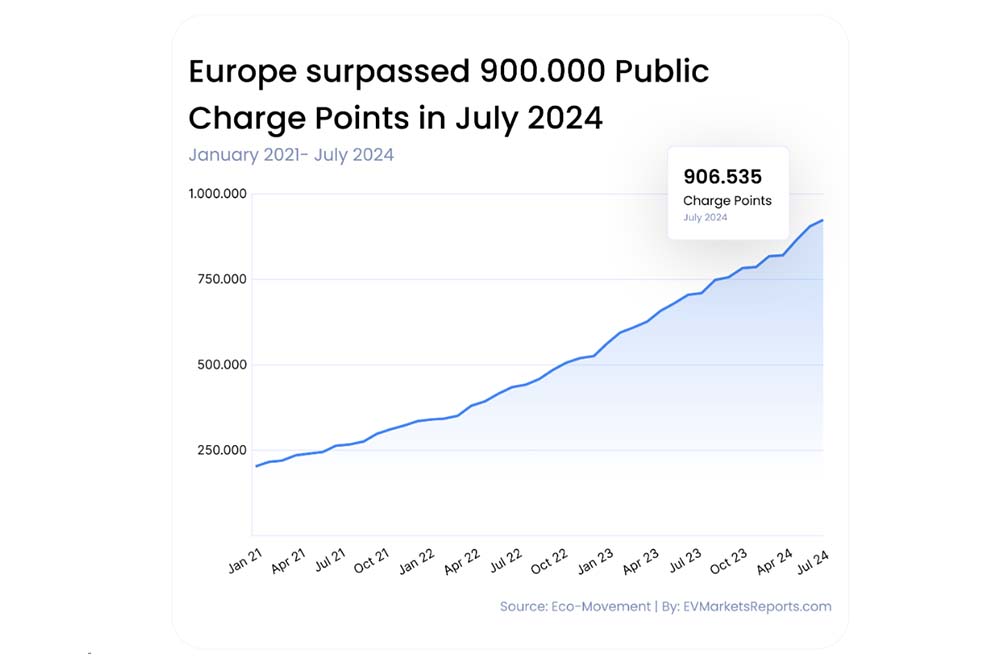
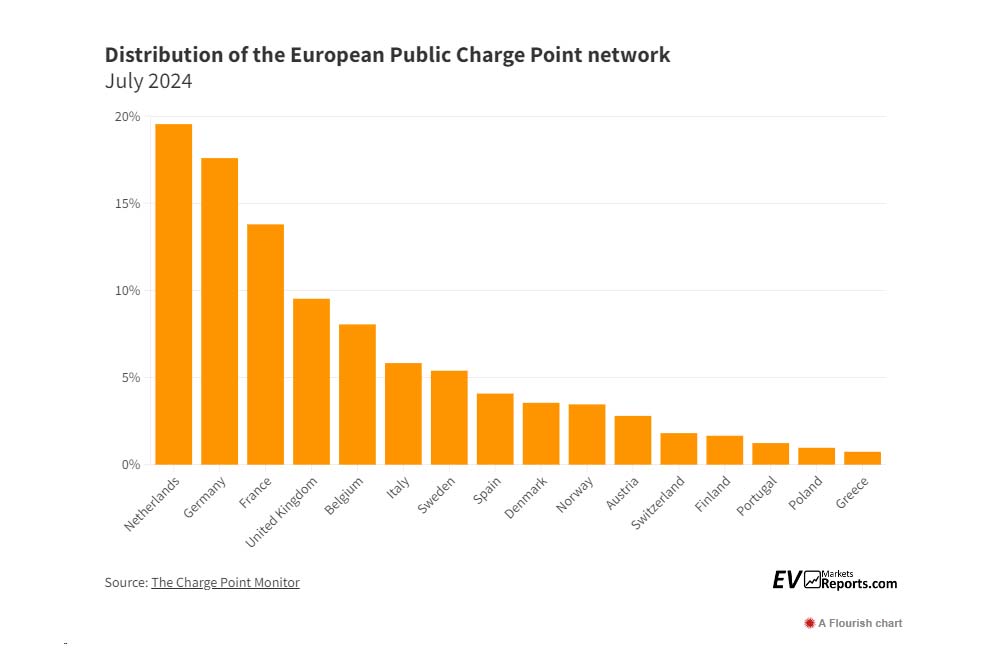
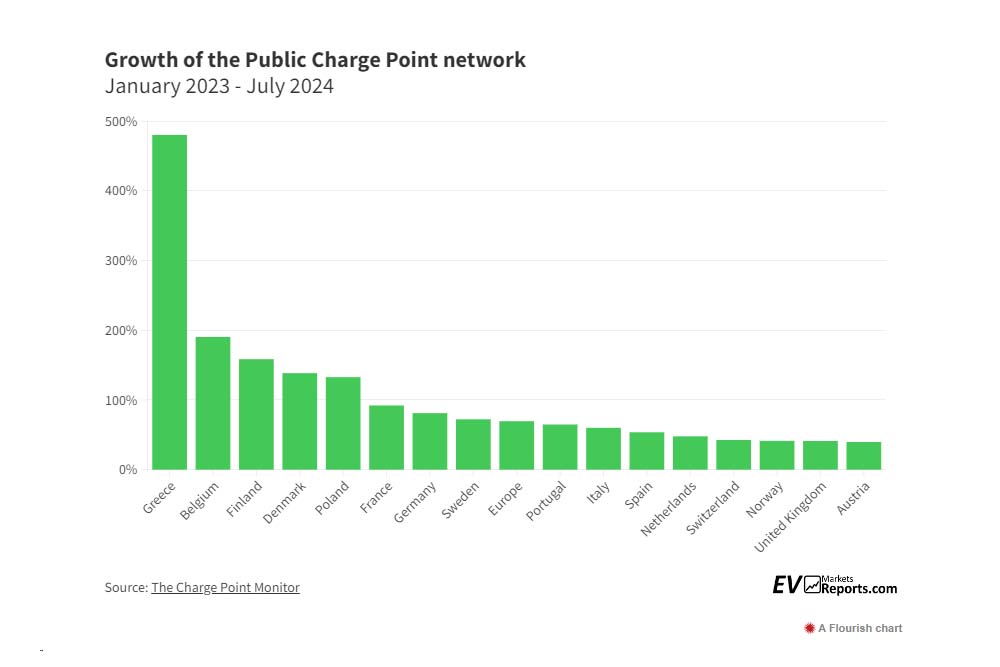
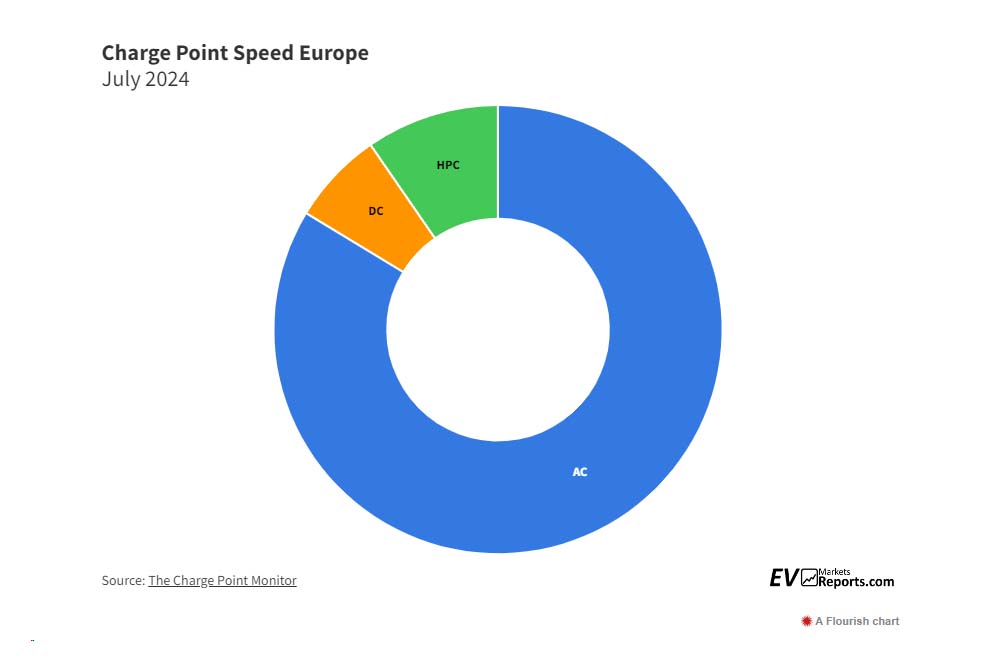
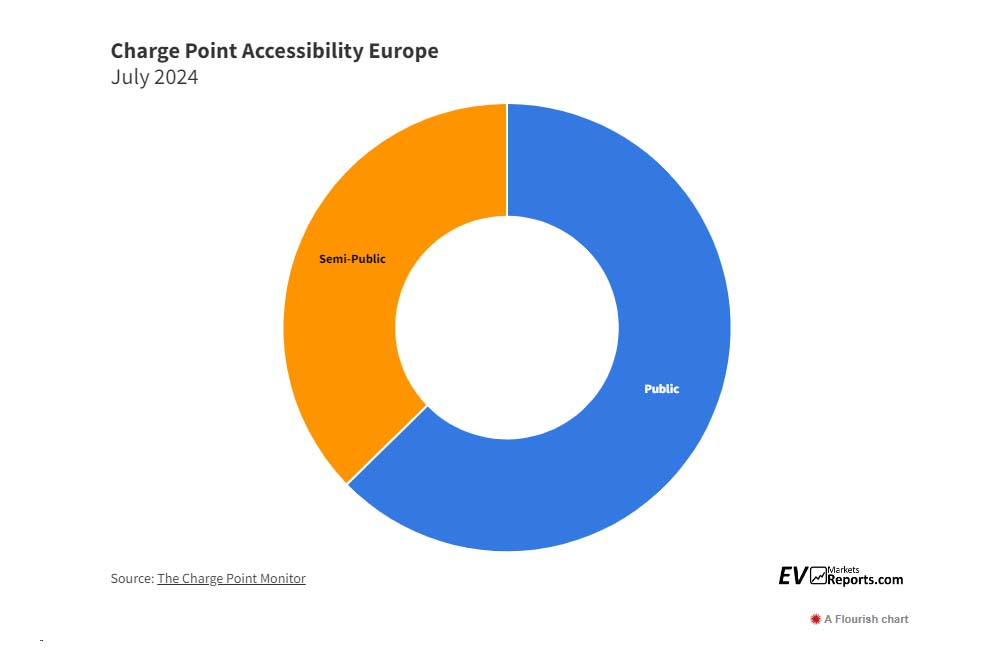
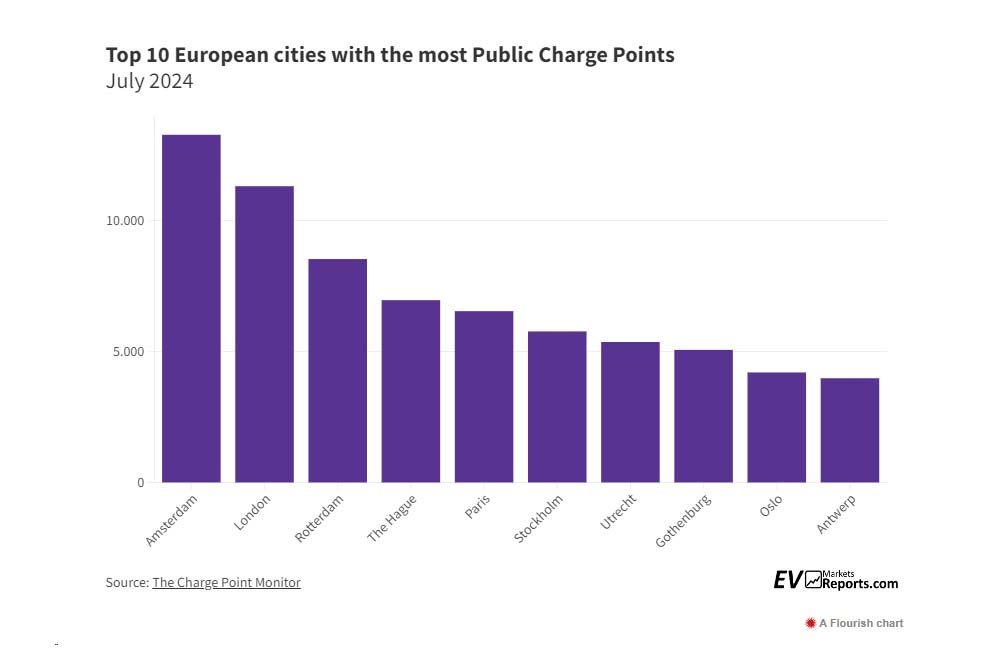
The majority of accessible European charging points are fully public (63%), and just over a third are semi-public (37%). The latter are often located on the private property of shops, in underground car parks, or at hotels or restaurants. Although public, access is subject to certain conditions, such as specific opening and closing times or other usage requirements.
The Charge Point Monitor also provides information on the number of charging points in urban centres in Europe. Here, too, the high level of market maturity in the Netherlands is reflected, with Amsterdam (13,286), Rotterdam (8,538) and The Hague (6,967) among the top four in this ranking. Only the metropolis of London (11,321) comes in between. Otherwise, Scandinavian cities stand out in particular: Stockholm and Gothenburg, with 5,773 and 5,067 charging points, respectively, exemplifying Sweden’s commitment to developing urban charging networks. Oslo and Antwerp follow with 4,205 and 3,983 charging points respectively.
‘This dominance by Dutch cities underscores the Netherlands’ strategic investments in charging infrastructure, making it a model for other European countries,’ the analysts at EVMarketsReports conclude. As a general summary, they note that the progress in Europe is impressive, but that the ambitious EU targets “continued and accelerated effort in infrastructure development.” The expansion of the electricity grid and simplifying the regulatory environment are essential levers, as “current regulations can slow down the installation process, hindering the pace of growth needed to meet future demands.”
According to the study, EV charging infrastructure must be evenly distributed across all regions: “Ensuring that charging infrastructure is equitably distributed across all regions is vital. While urban centres are well-served, many rural and remote areas remain underserved. Addressing this imbalance will require targeted investments and collaboration between governments and private sector stakeholders.”

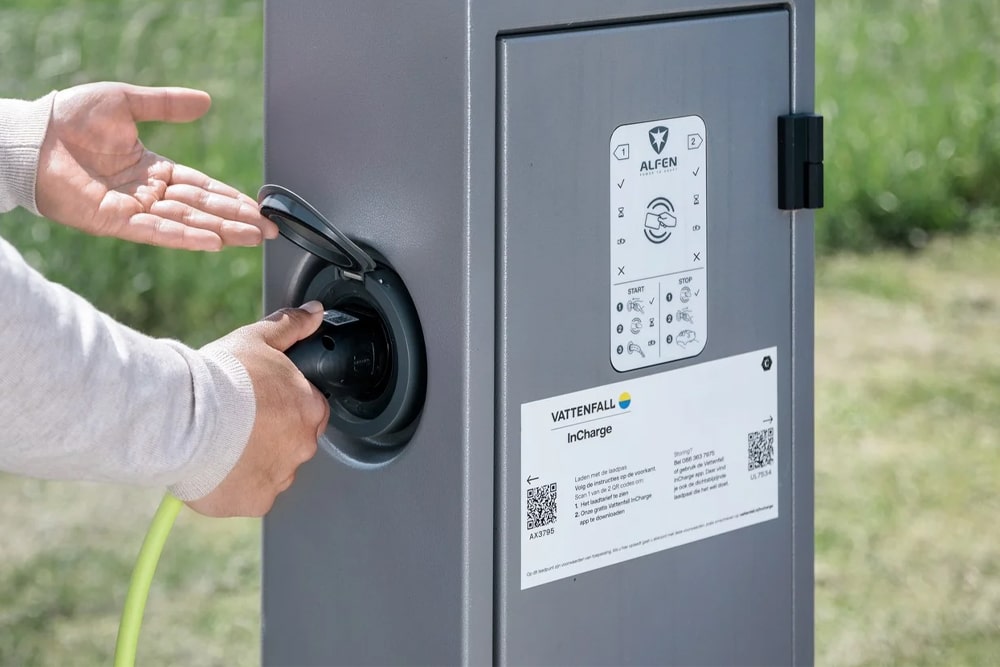

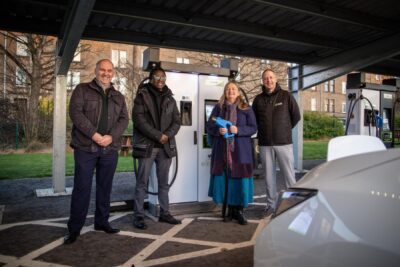
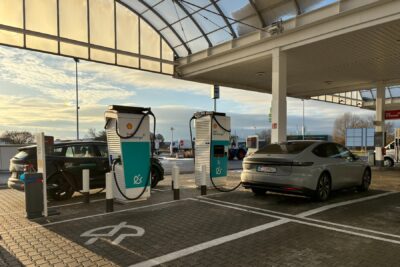
0 Comments